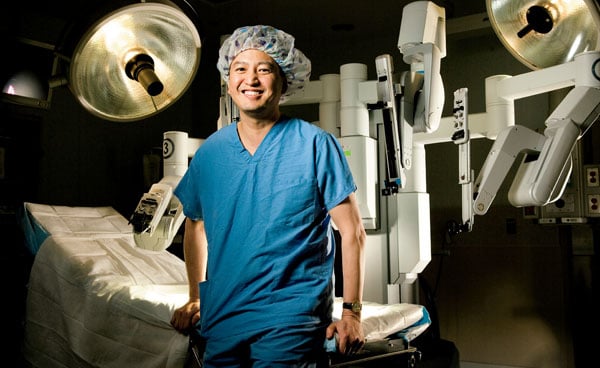This doctor's profile is from the April 2008 Washingtonian Top Doctors issue. To access the full Top Doctors database, click here.
One day not long ago, Jeffrey Lin put on scrubs and entered the operating room at Sibley Hospital. The gynecological oncologist had done hundreds of hysterectomies, but never like this, seated at a console several feet from his patient, running a million-dollar robot named Da Vinci.
The machine, which operates via a one-centimeter incision, makes surgery cleaner and more precise than traditional scalpel work. But it takes getting used to. The robot’s camera casts a magnified 3-D image into the console, where Lin works the remote controls, directing Da Vinci’s robotic arms. Surgeons typically rely on touch in the operating room; with the robot, they must use visual cues.
To learn, Lin—also a skilled laparoscopic surgeon on ovarian cancer—practiced at an animal lab in New Jersey and observed a colleague in North Carolina. Lin says the robot eventually might become a standard surgical tool for uterine and cervical cancers.
“In surgery, there’s a lot of innovation and change,” he says. “I’ve been a practicing oncologist for 17 years, but I still feel like I’m learning and getting better.”
See a profile of breast-cancer specialist Colette Magnant here.
See a profile of pain-management specialist Lee Ann Rhodes here.
See a profile of neurology specialist Kalpana Hari Hall here.
See a profile of orthopedist Philip Bobrow here.


















